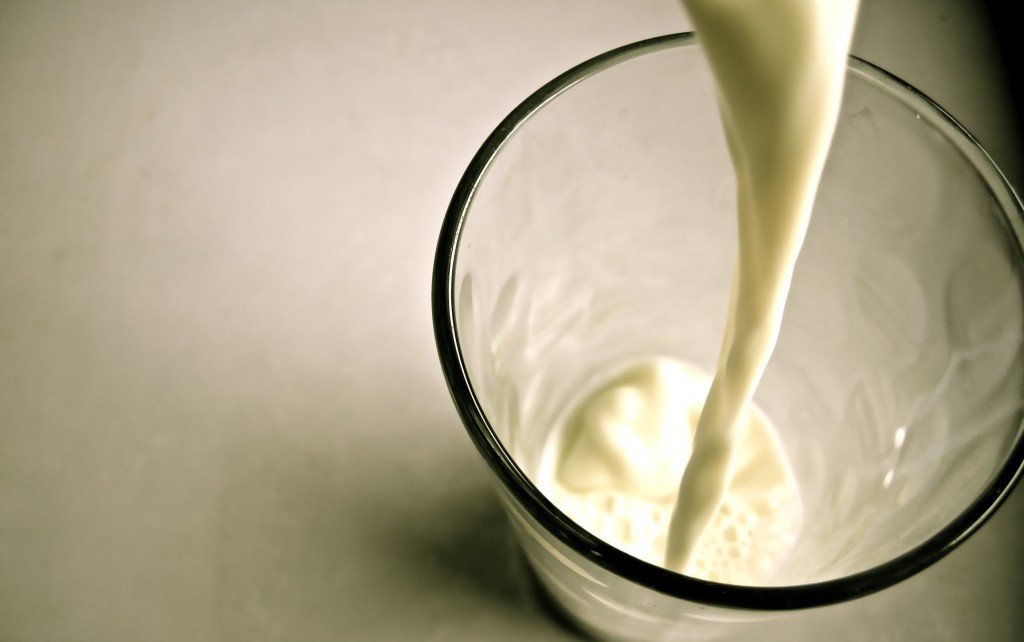Check out this article below from Nourished Kitchen on Raw Milk. I love our raw milk and it makes sense why, it taste delicious & Noah can drink and digest it so much easier.....No hormones or antibiotics....Love it!

I drink real milk: fresh, raw, local and full of fat.
May 18, 2011

I drink raw milk.
I
drink fresh, raw milk.
Really fresh,
really raw and always in season. In essence, I
drink real milk. I’ve waxed poetic about my love of
fresh cream before, but now it’s milk’s turn.
My milk is fresh, in season, grass-fed, full-fat and locally produced. It is rich, and luscious and creamy and it is a living food, teeming with beneficial bacteria, food enzymes and naturally occurring vitamins and minerals. It is not fortified; it doesn’t need to be – for every mineral, every vitamin contained in that cool glass of frothy white milk was placed there by nature as it is in all truly whole and unrefined foods. Real milk – raw milk – doesn’t need fortification as vitamins, minerals and enzymes remain intact instead of broken, denatured and destroyed through heat processing by standard pasteurization or, worse yet, the extreme temperatures reached through ultra-high-temperature (UHT) pasteurization.
Raw milk is a living food. It is dense in food enzymes and beneficial bacteria – two components of traditional diets that are severely lacking in the standard American diet in which foods have been subject to irradiation, pasteurization and other treatment. Raw milk, like any raw food, contains food enzymes – notably amylase, catalase, lactoperoxidase, lipase and phosphatase
1. These food enzymes play important physiological functions in the human body; notably, they help our bodies to better digest our foods. Amylase helps our bodies to digest carbohydrates, while lipase helps us to digest fats. Lactase, though not an actual component of milk itself, but a result of the presence of beneficial bacteria in raw milk, helps to digest lactose, or milk sugar. Raw milk is also a good source of beneficial bacteria – which are critical to human health (learn more about
beneficial bacteria and lactic acid fermentation).
I drink milk in season.
We don’t often think of milk as a seasonal food, but it is. The value of fresh milk and is at its height in spring, when grasses are green and lush and cows grazing on these fresh grasses produce cream particularly dense in naturally occurring fat-soluble vitamins – particularly vitamin A and E, though it also contains vitamins D and K
2 in smaller quantities
1. Moreover, the milk and cream of cows grazing on fresh pasture is extraordinarily rich in conjugated linoleic acid, a substance linked to reduced risk of cancer
2, 3, 4. In traditional dairy-consuming societies, the milk of cows grazing on fresh, spring grasses was particularly well-prized
5. Such milk, fresh and in season, is rich in flavor and that flavor changes, ever so slightly as the season progresses. Come winter, the cows go dry and we wait a few months for fresh milk once more – increasing our enjoyment once it arrives again in spring. There is nothing quite as charming and quaint as fresh strawberries paired with fresh cream when both hit their peak season in early spring.
I drink whole milk.
I drink whole milk, with its fat content fully intact – shaking the half-gallon mason jar until the cream that has naturally risen to the top combines with the milk. Real food is full-fat. Traditional societies consumed meat with accompanying fat, and milk with its full complement of wholesome, nourishing fats including vaccenic acid – a fatty acid with health benefits that could outweigh those of conjugated linoleic acid alone
6. Despite what you may have heard to the contrary, fat – particularly dairy fat – may also play a role in protecting cardiovascular health; indeed, a recent study indicates that while fruit and vegetable consumption helped to reduce the risk of cardiovascular disease, they only did so when combined with full fat dairy
7. Moreover, studies analyzing the role of dietary fat and human reproduction indicate that women consuming skim and low-fat dairy products experienced greater risk of anovulatory infertility while the consumption of full-fat dairy products actually decreased the risk of infertility
8. And, despite current recommendations that children should consume low-fat and skim milk products as opposed to whole milk, evidence indicates that doing so does not decrease the risk of overweight in preschoolers
9.
I drink local milk.
I drink locally produced milk, from people I trust and people I know care for their herd. Doing so ensures that the money I spend for the food I feed my family stays within my community and supports the very people actually
producing the food I consume rather than the people
marketing the food I consume. My decision to support my locally owned family-run farm means the continued viability of local agriculture within my community; moreover, it ensures that I can easily visit the farm, see the cows that my family owns through our cow share program and watch how they’ve been cared for. This system establishes trust, supports the local economy and continues to maintain the viability of time-honored traditions in agriculture. There’s a great deal of relief in knowing exactly where your food comes from, being able to ask questions and see firsthand how the cow was treated, what she was fed and how she was milked. There’s a great deal of relief in this system.


No comments:
Post a Comment